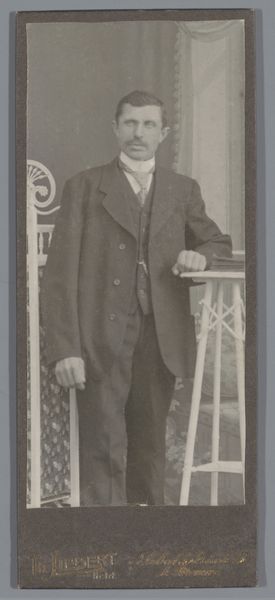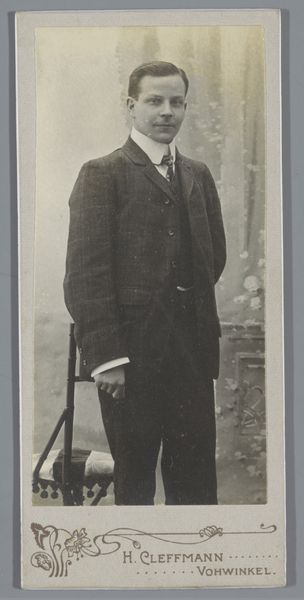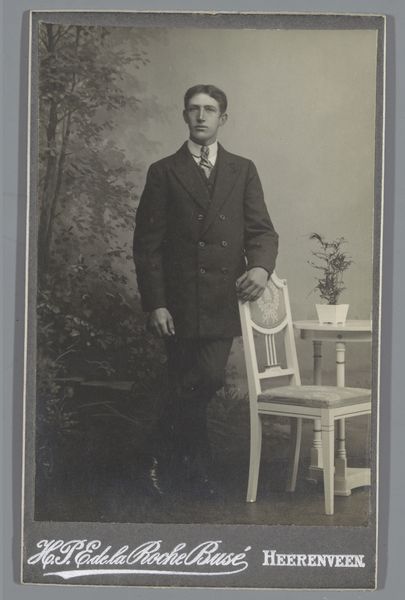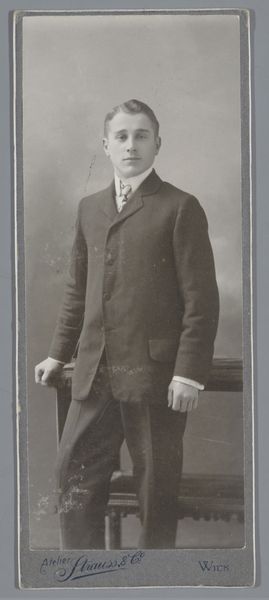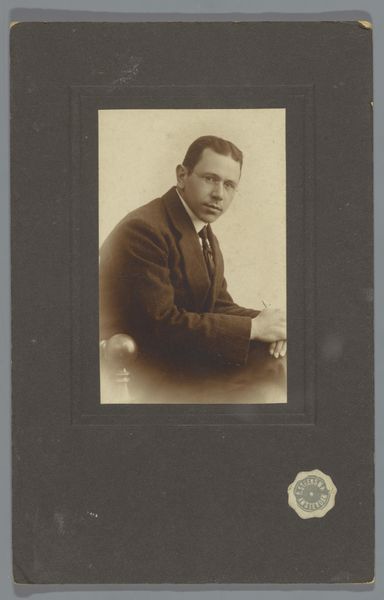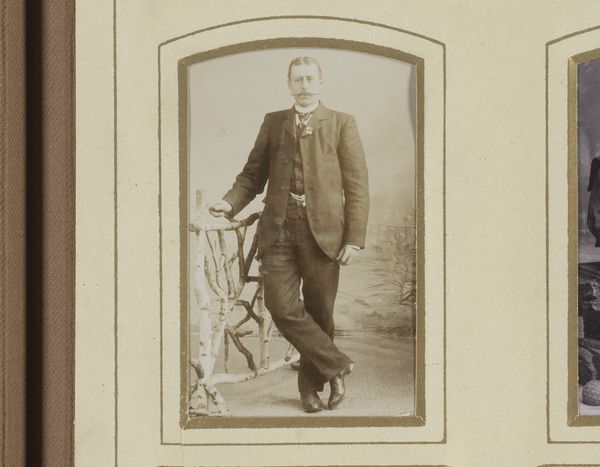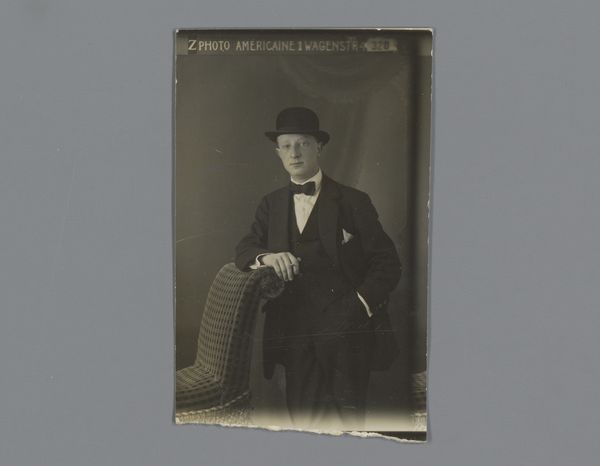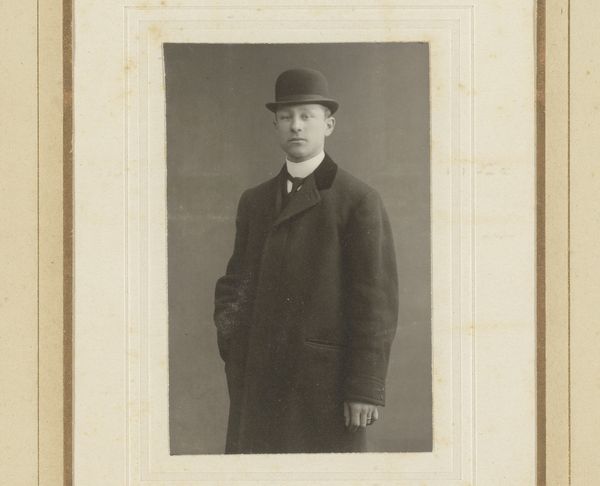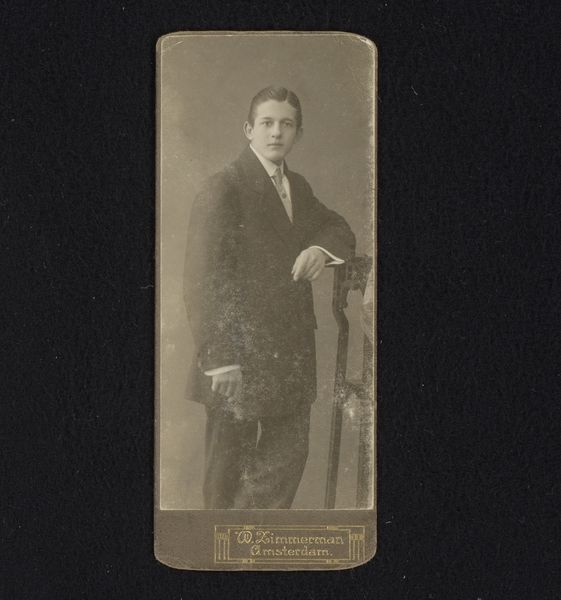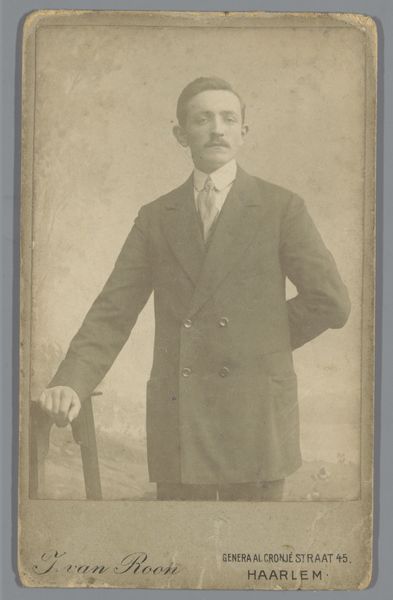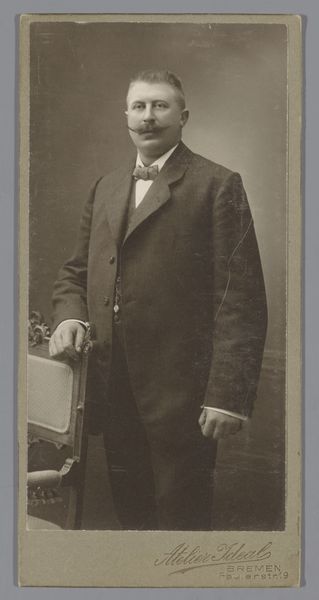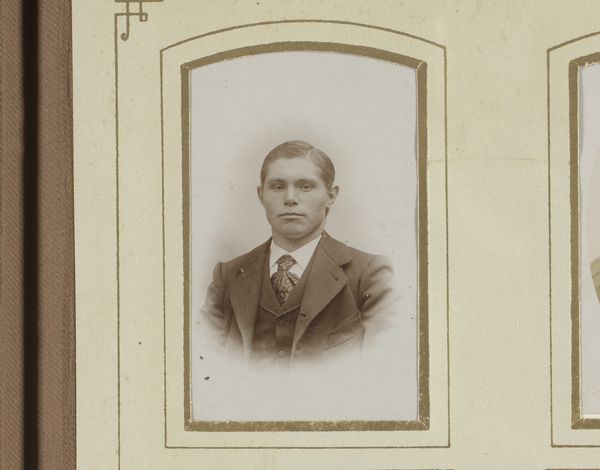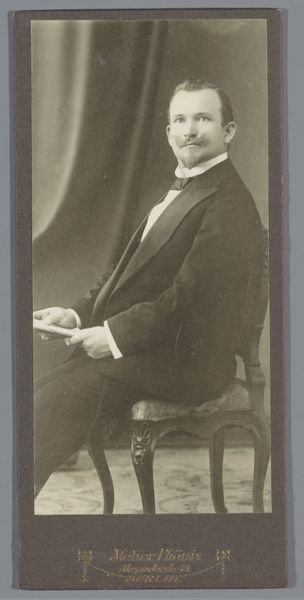
Dimensions: height 66 mm, width 60 mm
Copyright: Rijks Museum: Open Domain
Curator: Here we have an early twentieth-century photograph titled "Portret van een man," possibly taken between 1913 and 1926, attributed to Jan Gottfried Stütner. It's a genre painting, a portrait that gives us a glimpse into the past. Editor: There's an immediate somberness to it, don’t you think? The greyscale tones and slightly faded quality give it this melancholic feel, despite the gentleman's somewhat formal attire. The gaze is…direct. Curator: Indeed. Let’s delve a little deeper. Considering the probable time frame, think of the socio-political context: the lead-up to World War I and the subsequent interwar period. The subject’s clothing is fascinating. The three-piece suit and the boater hat could be viewed as markers of middle-class aspiration and conformity during a time of great social upheaval and also gender conventions. Editor: I'm immediately drawn to the floral arrangement placed next to him, its whiteness almost ethereal against the dark backdrop. Given its placement right next to him, could the artist be telling us more about beauty in an age of war or an oncoming transition? Curator: Precisely. Flowers frequently symbolise transition, memory, or even mourning. Perhaps the inclusion of these wilting flowers—you're right, there's a slight fading apparent in their petals—was a reflection of a longing for beauty and a hope for peace in such precarious times. This becomes an intimate portrait reflective of a wider, anxious historical period. Editor: The gaze feels piercing. He is challenging us to consider not only his status or time period but his psychological depth. Is there anxiety there? Or just the gravity of his own existence reflected in this single moment, framed by these culturally-significant elements. Curator: His hat also signifies formality, his economic position and social setting within his era. We shouldn’t view him as an isolated figure but acknowledge this genre-portrait as a window into early twentieth-century culture, rife with gender and economic pressures. It is a lens to the identity of people caught in times of monumental social changes. Editor: Absolutely. Seeing this now allows us to reflect on continuities and ruptures across a century of visual representations. These familiar yet unsettling faces—snapshots from a distant past but somehow close through emotions and culture—allow us to build stories of remembrance and transformation. Curator: Thank you. I agree. It's vital to consider both its artistic qualities, along with its significance as an emblem of this period of history and intersectional discourse. This dialogue helped see how he could mean so much in history.
Comments
No comments
Be the first to comment and join the conversation on the ultimate creative platform.
